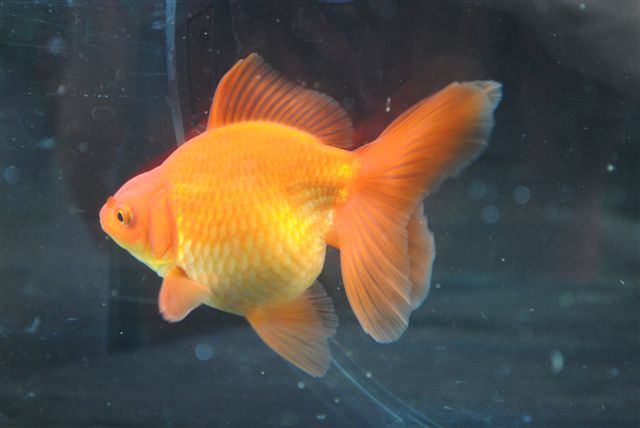Goldfish Selecting and Rearing - Fantail By David Gay
I started my strain of metallic Fantails with a trio of 2 males and 1 female bought from one of the top Fantail breeders in the UK about 6 years ago. My stock going into this season is about 16 fish bred 2011 (not used this year), 14 from 2010 and 8 from 2009/08. This year I have bred 4 males (2010) with 2 females (2009 and 2010). In previous years I have aimed for a larger spawning using 3 or 4 females producing many thousands of fry, but as I am trying to spawn Ranchu and I have had a spawning of 2011 Nacreous Fantails, I am looking for something smaller in 2012.



All three photos are of fish bred in 2010. The middle and right hand photos were September (5 months old) and the left hand picture was July 2011 (so 15 months old).
The precise timings of steps that follow will depend on the speed at which the fry are growing and on the strain of Fantails involved. I will use my own strain as an example (though given the timing of writing this piece, I can’t illustrate it with photos). I am referring to metallic fish, though the issues are more or less the same, save for colour selection early on. The key to a good Fantail are tail, body and colour and selection is pretty much on that basis. In the first couple of months almost all culling is from above. I would expect to complete the first cull at about two weeks after they became free swimming. It should be straightforward to identify and remove all runts, twisted bodies, single tails at this point. The Fantail should not be overly long so the twin tail will not be particularly clear for a while.
I cull weekly thereafter for the next 6 – 8 weeks. The second cull would be to remove any missed from the first cull and any that have developed what are clearly tri tails (by which I mean two lower lobes but only one, clearly joined, top lobe) or any where it is obvious that the tail is not sufficiently widely spread. These tails show as inverted V shapes, whereas the desirable shape, when viewed from above, is more of a W, ie more widely held. By the next cull joined tails along the top of the caudals should be visible. It may be that those retained will include those with too little split, but that is because the split isn’t fully visible at this stage. Also, at a month or so, the fish with wakin style bodies should be increasingly obvious and they too can be removed.
In the next couple of culls the emphasis will be on sufficient split in the caudals, development of body shape and at some point when they are large enough, a side inspection for single anal fins. I would also look to remove any fish that have insufficient forking in the tail, though that is very rare in my strain. By 6-8 weeks I would not expect to have any fish left that are not at least saleable to a local aquatic store that would be probably far better than their typical imported fish.
Thereafter, the issues are more likely to be twisted caudal lobes, any ryukin style hump or similar issues – but as these may become apparent over time, it necessitates keeping a reasonable number of fish to allow for some to fall away.
My strain starts to change colour at about 10-12 weeks and can take months (some fish don’t change colour and others, at a year old are probably still only 75% changed). However, this does seem to reflect in better colour eventually.
For nacreous fish, of which my experience is limited, I would remove the metallics and matts as soon as possible (they are typically visible from a month or so onwards) but in all other regards I would treat them the same way as metallics.
As a result of these finer points and occasional losses to swim bladder problems, though these thankfully are increasingly rare, I need to take 20 – 25 fish into the winter with a view to keeping 10 – 15 by the time they are two years old. They should be 2 inch body length as they enter their first winter.
I hope that helps but please let me know if you have any questions.
David






